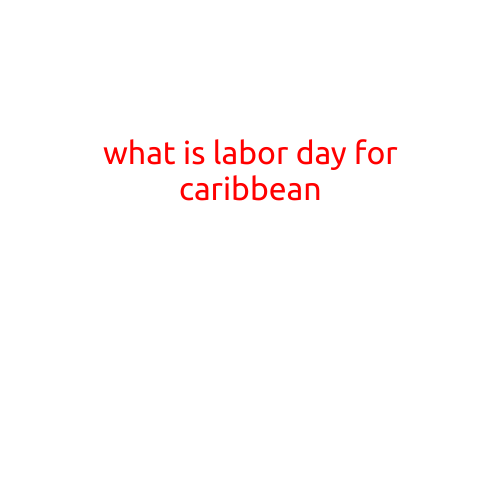
What is Labor Day? Facts and History
Labor Day is a federal holiday in the United States that is celebrated on the first Monday in September. It is a day to recognize and honor the contributions and achievements of American workers. In this article, we will delve into the history and significance of Labor Day, as well as some interesting facts about this special day.
History of Labor Day
Labor Day has its roots in the late 19th century, when the Industrial Revolution was transforming the US economy. As more Americans moved from rural areas to cities, they began to organize labor unions to fight for better wages, working conditions, and benefits. One of the most prominent labor leaders of the time was Matthew Maguire, who is credited with proposing the first Labor Day celebration.
The first Labor Day was held on September 5, 1882, in New York City, where 10,000 workers marched through the streets and attended a rally in Central Park. The event was so successful that it sparked a wave of Labor Day celebrations across the country. In 1884, Congress passed a law making the first Monday in September a federal holiday, and Labor Day has been celebrated nationally ever since.
Significance of Labor Day
Labor Day is more than just a three-day weekend. It is a day to recognize the hard work and dedication of American workers, who are the backbone of the country’s economy. It is a day to reflect on the struggles and sacrifices made by workers to improve their working conditions, wages, and benefits.
Today, Labor Day is also a popular day for outdoor activities, family gatherings, and end-of-summer sales. Many people take advantage of the long weekend to plan vacations, attend festivals, and enjoy outdoor activities like picnics, barbecues, and sports events.
Interesting Facts about Labor Day
- The longest Labor Day: The longest Labor Day parade was held in New York City in 1956, stretching over 6 miles from City Hall to Central Park.
- Labor Day sales: Many retailers offer special deals and discounts on Labor Day, which is often considered the unofficial end of summer.
- Original purpose: Labor Day was originally intended to honor the labor movement and recognize the contributions of workers to the US economy.
- First Labor Day celebration: The first Labor Day celebration was held on September 5, 1882, in New York City, where 10,000 workers marched through the streets and attended a rally in Central Park.
- Labor Day parade: Many cities and towns hold Labor Day parades, which often feature floats, marching bands, and labor leaders.
- Unions and Labor Day: Labor unions, such as the AFL-CIO, have a long history of organizing Labor Day celebrations and advocating for workers’ rights.
- Celebrations around the world: While Labor Day is primarily celebrated in the United States, other countries also recognize labor movements and workers’ contributions, often on different dates.
Conclusion
Labor Day is a special day to recognize and honor the hard work and dedication of American workers. From its humble beginnings as a local celebration in New York City to its current status as a national federal holiday, Labor Day has come a long way. Whether you’re planning a family gathering, attending a Labor Day parade, or simply enjoying the long weekend, take a moment to appreciate the contributions of American workers to the country’s economic and social well-being.





